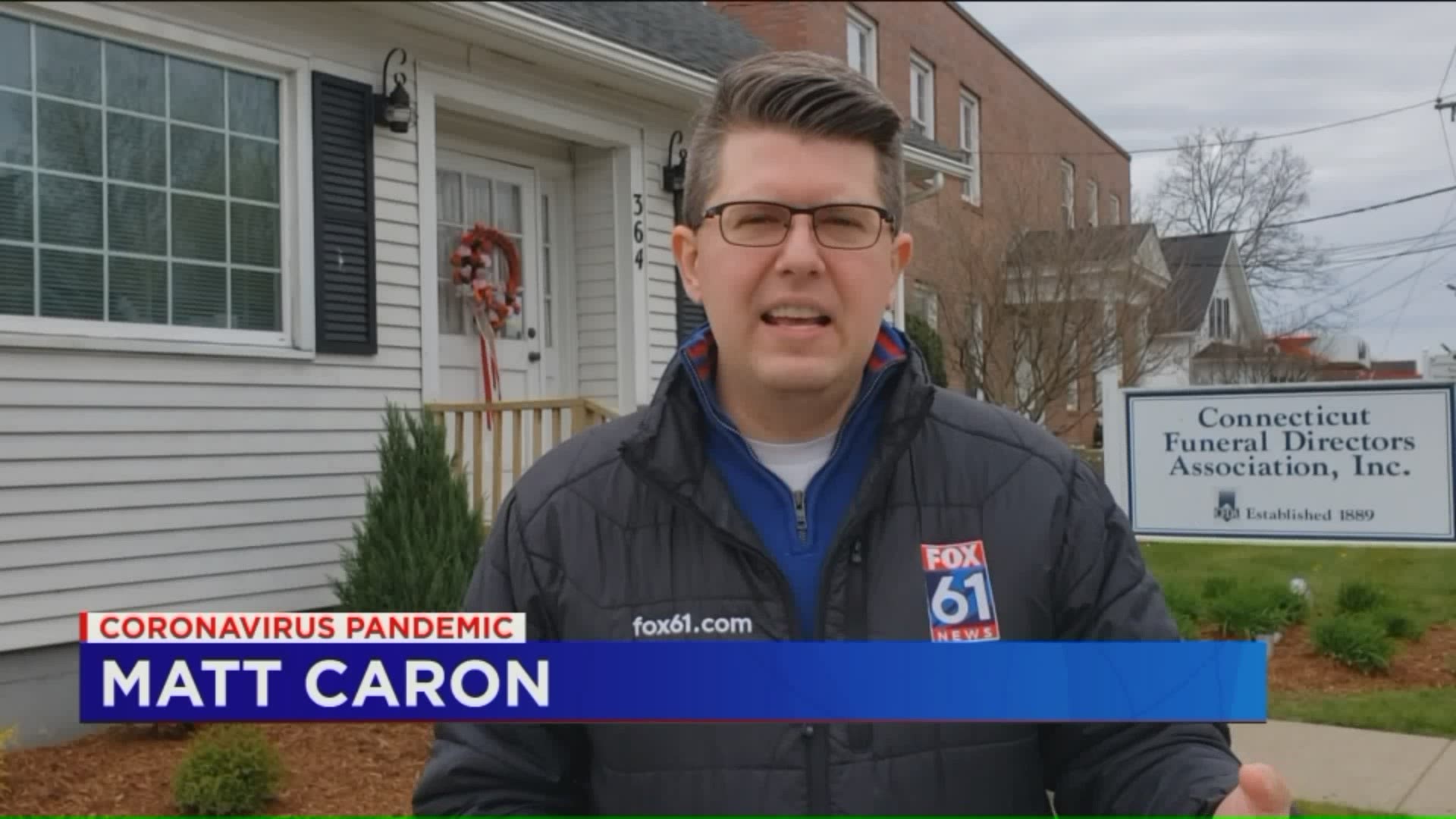As the rate of new hospitalizations declines, COVID-19 deaths are still on the rise. And funeral directors say, there’s no playbook for how to handle the deceased.
The COVID-19 death toll in CT is now over 2,000.
The deceased have to be picked up from hospitals, nursing facilities and sometimes homes.
There's a lot we don't know about the virus but one thing we do know is when the body dies, the virus does not.
Often overlooked in the COVID-19 crisis are Connecticut funeral directors.
"We are on the front lines. No one has talked about us," said Lillard Lewis Sr. He's a licensed embalmer from Windsor but works with the Chapel Memorial Funeral Home in Waterbury.
He told FOX61 they are often last in line for critical protection.
"Our PPE gear has been diverted to hospitals, nursing clinics and nursing homes."
Lillard says he worries about his family.
"I’ve got three children and nine grandchildren and a wife. I don’t want to bring this home to them. I stood out in my backyard and took off all my clothes," he said.
On Tuesday, the Connecticut Funeral Directors Association updated their PPE supplier list.
Jesse Gomes is the Funeral Director at Molloy Funeral Home in West Hartford and an executive board member for the Connecticut Funeral Directors Association.
"The a Connecticut Funeral Director’s Association was very fortunate. They recorded two shipments now of PPE gowns, masks and gloves. All of which were distributed to Connecticut funeral homes accordingly so I have not seen a shortage of it," said Gomes.
Beyond PPE, Lillard Lewis told FOX61 he thinks there needs to be a clearly communicated and consistent message on best practices to handle the infectious nature of the deceased.
"Some of us have heard. Put soap and water in the mouth and the nostrils and that should kill the virus. Make small incision and treat the lungs with cavity fluid first. That makes no sense. I just want to know. Give us some guidelines on what to do," explained Lewis.
The Funeral Directors Association has issued guidance to advise healthcare facilities to wrap their deceased in sheets and to cover the airways to minimize exposure prior to the arrival of the funeral director.
"Everyone has their preferred method so to speak. None the less there is a standard of care and a certain threshold we have to meet in terms of disinfection. That’s our obligation as an embalmer to make sure that those remains are safe for disposition," said Gomes.
They've also alerted funeral homes that the 48 hour waiting period for cremations has been waived.
"And I don’t think that was for contamination purposes I think it was just to help alleviate the amount of cremations that would be taking place," said Gomes.
Gomes said embalming, cremation, entombment and direct burial are all still available options for families, but they have been forced to change the way the say goodbye.
They grieve either in groups no larger than five people, or virtually.
"A lot of our services are done right at the graveside now. We are implementing and embracing technology now more than ever," said Gomes.
And keep in mind, deaths are lagging indicator of where we are in this pandemic.
They are often only reported into the system weeks after the death actually occurred.
And it’s very likely the death count is under-reported because often times someone who dies of COVID-19 related symptoms who hasn’t gotten tested will have pneumonia listed on their death certificate.

